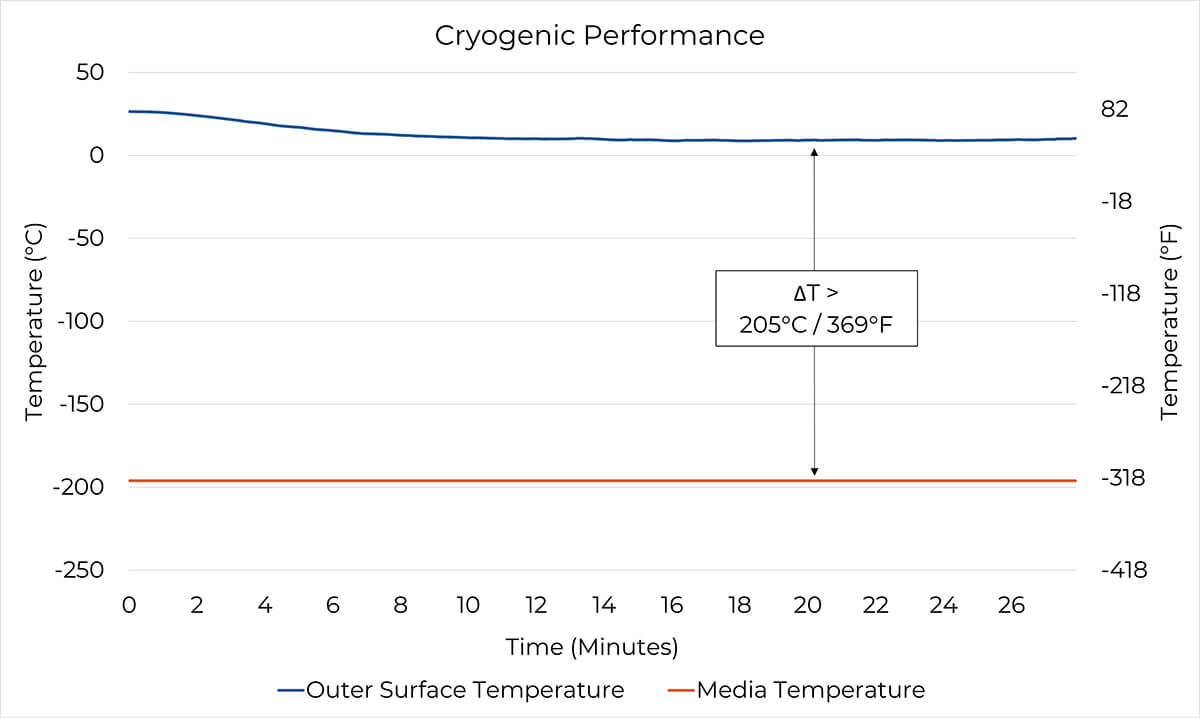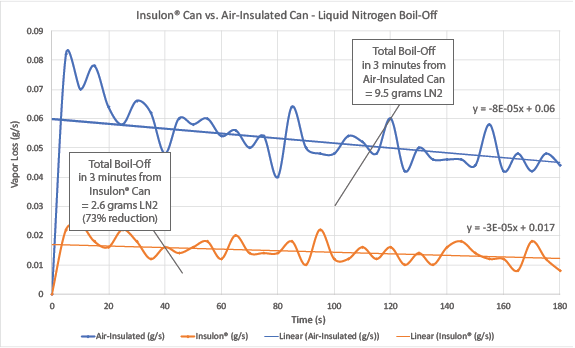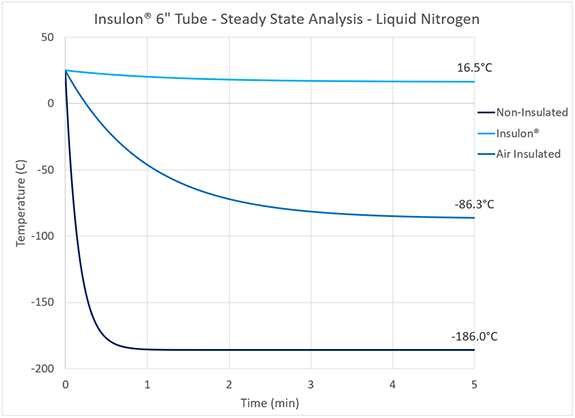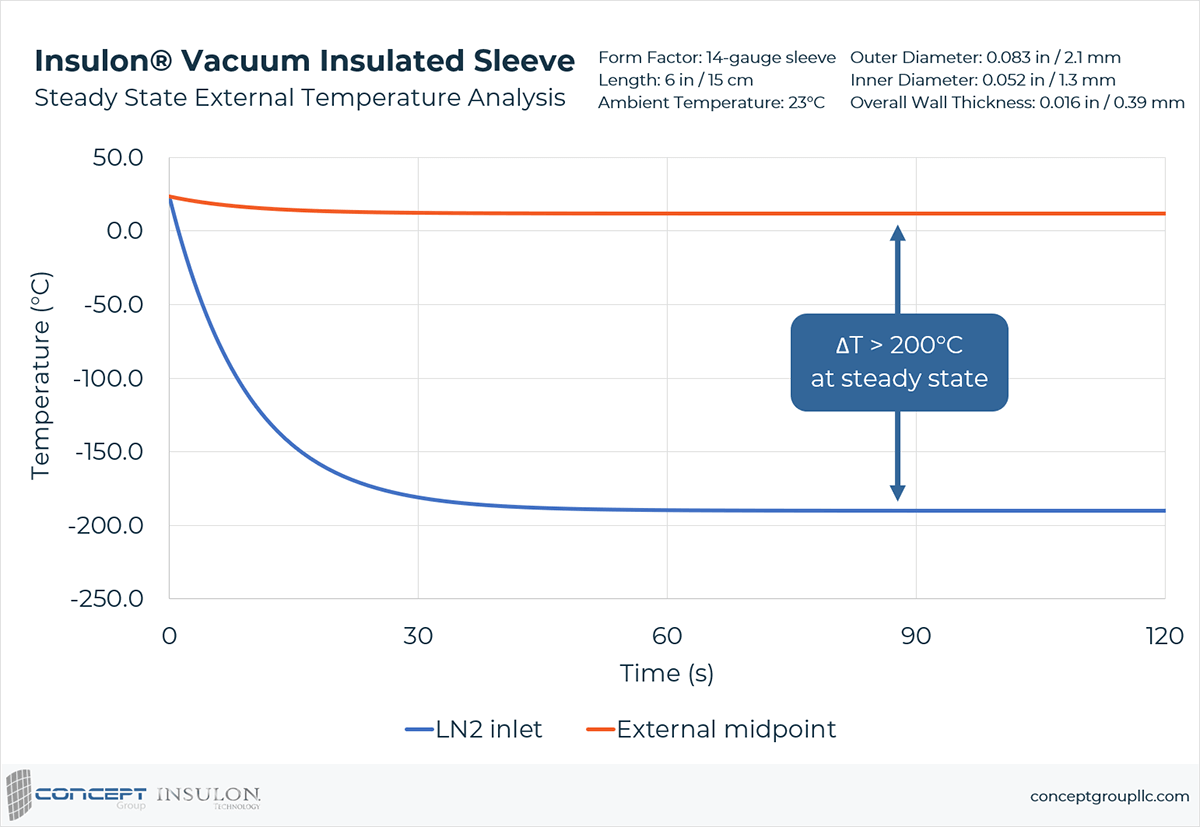
Surface Temperature Analysis
Insulon® Hose LP, 1/2″ ID, 6 ft. Length
In this analysis, an Insulon vacuum jacketed transfer hose provides cryogenic insulation for liquid nitrogen. The chart illustrates the temperature difference between the process media (LN2, -196°C) and the outer surface (aka “touch temperature) of the hose. The temperature difference at steady state was over 205°C (369°F).
This analysis was conducted with a 1/2″ ID, 6-foot long Insulon Hose LP. Ambient temperature was 23°C.

Boil-Off Analysis
Insulon® Open-Top Canister
Cryogenic systems that store or transport thermally sensitive materials such as helium, hydrogen, argon, and liquid nitrogen can suffer expensive material losses due to evaporation. These evaporative losses are also known as boil-off losses. Insulon® high-performance vacuum insulation can help to minimize boil-off for a more efficient system. For this analysis, liquid nitrogen (-196°C) was allowed to evaporate from a 2.5-inch Insulon open-top canister and a non-insulated, single-walled, open-top canister (see video). Boil-off rates were recorded for 3 minutes. Ambient temperature was 23°C.

Surface Temperature Analysis
Insulon® Tube, 1/2″ ID, 6″ Length
Insulation performance can be demonstrated by measuring the temperature difference, or “Delta T,” across the inner and outer walls of a vacuum insulated tube. For this analysis, liquid nitrogen (-196°C) was transferred through three 6-inch tubes (see video):
- Insulon vacuum insulated tube
- Double-walled, air-insulated tube
- Single-walled, non-insulated tube
The chart above details the external surface temperature of each tube at steady state. External surface temperatures were measured at the midpoint (3 inches along the 6-inch tubes). Ambient temperature was 23°C.

Surface Temperature Analysis
Insulon® Sleeve, < 0.5 mm thick
Insulon® Technology is used to build ultra-thin vacuum insulation and is extremely well-suited to small bore pipe insulation. Insulon® can be manufactured for diameters as small as 24 gauge needles. For this analysis, liquid nitrogen (-196°C) was run through a 14 gauge Insulon® sleeve with an overall wall thickness of less than 0.5mm. The graph above compares the external surface temperature of the sheath with the liquid nitrogen temperature at the inlet. External surface temperature was measured at the midpoint (3 inches along the 6-inch sheath). Ambient temperature was 23°C.
Need even higher performance?
For applications that require our peak performance, we install multi-layer insulation (MLI) inside the vacuum annulus.
